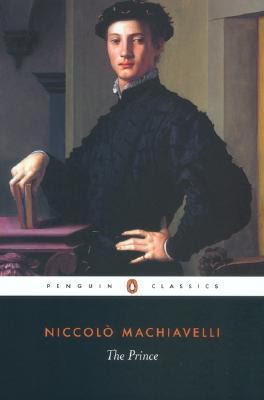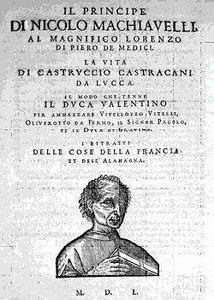San Mercuriale, Forli
In May 1487, Caterina Sforza began to take the reigns of power. Her husband had suddenly been taken ill with a mysterious illness and as he lay in his sick bed she had to govern Forli and Imola in his stead. Yet Caterina had to watch herself. Girolamo was seriously unwell and her eldest son was still only eight years old and there was those who had their eyes on Forli. Thankfully Girolamo recovered, but thanks to his illness as well as his weak character, Caterina knew that he was not a fit ruler. She had to take centre stage, and so she did. And in 1488, her life would change forever.
As Caterina began ruling Forli in mid 1487, she began to make plans should her husband die. She renewed her alliance with Milan and sent feelers to the Bentivoglio family in Bologna. However, the fortress of Ravaldino was under the protection of a man who she distrusted, Melhiorre Zaccheo. He had showed up in Forli as Girolamo was desperate for cash, and in return for a few loans was installed as commander of Ravaldino. Caterina made it one of her first jobs to get rid of the man and, at 8 months pregnant rode to Ravaldino. She then got off her horse and called to Zaccheo to relinquish the castle. He, of course, refused saying that he had heard Girolamo was already dead and he would only vacate the fortress on his terms and when he was damn well good and ready. Caterina rode back to Imola, a plan formulating in her mind. On August 10th, Innocenzo Codronchi turned up at Ravaldino. There was already bad blood between him and Caterina after she had ousted him from the Castel Sant Angelo. But Girolamo had rewarded Codronchi's loyalty and made him castellan of Ravaldino, which would have displeased Caterina greatly. And when Girolamo had made Zaccheo castellan of Ravaldino in his stead, he was made captain of Girolamo's personal guard. And Codronchi would have a massive part to play in helping Caterina take back her fortress. The two men knew each other well, and had played cards together often. And when Codronchi returned, it is no surprise that Zaccheo welcomed him, and the two men played at dice. The loser would have to provide lunch the next day. Of course Codronchi lost and the next morning he left Ravaldino, promising to return with lunch. His servant appeared the next morning with a fowl for lunch and Zaccheo admitted him so that he could prepare the meal. As lunch was served, the manservant waited behind Zaccheo's chair, and as Zaccheo rose from the table Codronchi grabbed him and the servant hit him on the head! Next, Zaccheo's own servant stabbed his master over and over again. It was Codronchi himself who dealt the final blow, by stabbing Zaccheo with his own sword. Zaccheo's body was then unceremoniously thrown down a well, and Codronchi threatened to do the same to Zaccheo's followers. They fled and Codronchi raised Ravadino's drawbridge. As Caterina was due to give birth on the 11th August, her brother in law brought news of Zaccheo's murder to her. Despite being so close to giving birth, she rode hard to Forli and rode up to the moat, calling to Codronchi to explain himself. He replied:
"Madam, you shouldn't entrust your fortress to drunkards and people with no brains"
And that he murdered Zaccheo because he "felt like it". What a brilliant excuse! Yet as he looked down at Caterina and saw her exhausted from her long ride and being "pregnant up to her throat", he advised Caterina to get some rest and invited her to lunch the very next day. Yet there was a condition, she was only allowed to bring one servant with her. And the next morning, she and a maidservant rode to Ravaldino. Her maidservant had prepared lunch, to make it look as though she were afraid of a poisoning attempt. Yet as she disappeared into Ravaldino, she and Codronchi disappeared alone where they discussed what was going to happen, and allowed their servants only a glimpse of various documents being signed. Not long after, Caterina got back on her horse and rode back to Imola. Three days later she returned to Ravaldino with a new castellan, Tommaso Feo. The two of them entered the fortress and not long after she emerged with Codronchi at her side. They rode together into Forli and stopped before the steps of the Riaro palace, claiming that Rivaldino was back in her hands and she had chosen a castellan who was suitable. Following dinner within the palace, Codronchi left the palace and was never heard from again.
The next day, Caterina gave birth to Francesco who was lovingly nicknamed "Sforzino". And at the same time she was busy dealing with international politics. Her main issue was with Erole D'Este, who owned the lands next to hers, and she had to keep an eye on him. Ercole and Caterina often clashed and Ercole never seemed to pass up an opportunity to goad Caterina. Two days after little Sforzino was born, Caterina had finally had enough and built a farmhouse on their borders where she stationed soldiers to constantly watch the Ferrara lands for signs of invasion. Ercole realised what was going on and on 19th August 1487 sent his peasants to tear down the little farmhouse on the basis that Caterina had built it on his territory. Caterina took the case before a tribunal but lost to Ercole. In September of the same year, the old Ordelaffi claimants made their move and stormed Forli's western gate. Thankfully this was stopped before it could really have begun, and despite only being a month out of her child bed insisted on interrogating the prisoners herself. Upon interrogation, she discovered that the man behind the plot was a farmer by the name of Passi. Yet as she brought Passi before her, Passi shouted that he hadn't spoken to these men in over eight months. The man who made the acusation was hanged, and Passi was set free.
Yet all the while, Girolamo remained in his sickbed with his mysterious illness. Yet even as he began to recover, he stared back with some of his old tricks. Despite telling his people he would get rid of the dazzi tax, he reinstated it. And the outcome was not a happy one.
Following the reinstatement of the dazzi in 1488, as wedding bells rang throughout the country as Lorenzo de Medici's daughter married the son of Pope Innocent VIII, two of Girolamo Riario's enemies united. Riario feared both Rome and Florence following his involvement in the assassination of Giuliano de Medici, and the fact that both states supported the Ordelaffi claimants to Forli. In his fear, Girolamo began to upset the nobles of his own town by trying to relieve the taxes paid by the poor. Riario tried to shift the tax to the rich town dwellers and the move was not a popular one. Ludovico Orsi, a one time friend of Riario, took it upon himself to rebuke Girolamo as acting up to the peasant class would only make things worse. Yet Riario would have none of it, and Orsi grew angry and told Riario that the people would tear him to shreds. And sadly for Girolamo Riaro, these words would become truth soon enough. Riario however accused Orsi of never having been his friend and demanded, "Perhaps you would rather that I die?". Orsi fled, and having met up with his brother agreed that the Count should die. Giralomo, already paranoid about assassination attempts, kept a constant watch on the piazza and often spotted as Orsi tried to make his way in disguise through the town. On one occasion Girolamo dragged Orsi to his quarters and demanded to know why he didn't visit any more. Orsi muttered something about needing money for the count but as soldiers stepped forward, he panicked and fled. And now that the Orsi had fully broken with the Riario's, they decided to act before Riario could. And plans to murder the Riario family began in earnest.
Girolamo Riario took his midday meal in his "hall of the mymphs", away from his family and in the afternoon, following a small siesta, held audiences. The Orsi assasins already knew how to get a couple of minutes with the count, and persuaded Riario's new page that his uncle Gasparino needed a few minutes alone with the count. Gasparino was, of course, one of those involved in the plot. Gasparino then agreed to signal from the open window when Girolamo was taking his siesta.
Girolamo Riario
Moday, April 14th was the day when it would all happen. The town was busy with the market, but by lunch time the main piazza had quietened down. Caterina was busy having lunch with her children, and as Riario went to lay down, Gasparino signalled. Six members of the Orsi family, all dressed in armour, climbed the stairs towards the hall of the nymphs and there, Cecco Orsi stabbed Riario over and over. And as they did so they cried "Liberty!". As the Orsi family ransacked the palace the servants fought amongst themselves, trying to work out if their lord had beenn killed or not, and the gathered townspeople did the same.
Three soldiers dragged the naked, battered corpse of Girolamo Riario and threw him over the balcony into the piazza. The people circled the mangled body, recognising the facial figures of their count. And they ran to the palace in horror. And as they ran, the palace was ransacked.
Girolamo's body was left laying in the piazza like meat. His body was dragged through the piazza, being spat upon and kicked and some fanatics tried to tear him to shreds. Yet the fraternity of the Battuti Neri stopped them, and they took the body to the cathedral.
Caterina was having lunch with her children at the time, and when she heard the cries of " Liberty". Gathering her children to her, she went to the window with little Ottaviano and called for help for the little heir of Forli. The palace was however now in the hands of the Orsis, and there was no help that would come for her, and Caterina knew what was at stake. The assassins would look to kill her children and so she barricaded herself inside her rooms, and called to those loyal to her that there was no point in fighting as the Orsi family had control. And as she spoke those words, her attackers pounded on her doors. Yet Caterina would not allow her town to fall completely. She was the widow of Forli and mother of the heir. She ordered that those loyal to her meet in Ravaldino, and as she did so, the Orsi burst into her rooms.
It was at Ravaldino in 1488 that those mythical words were cried, "I have the means to make ten more sons!". Did Caterina Sforza really speak these words?
Alas, as it is late, I feel that the myth of Caterina and "ten more sons" should be saved for the next entry. So please do keep your eyes pealed.
Further Reading
Elizabeth Lev, The Tigress of Forli,
Niccolo Machiavelli, The Prince
Paul Strathern, The Artist, The Philosopher and the Warrior
Ernst Breisach, Caterina Sforza: A Renaissance Virago
Christopher Hibbert, The Borgias and Their Enemies
Jacob Burckhardt, The Civilisation of the Renaissance In Italy
Christopher Hare, The Most Illustrious Ladies of the Italian Renaissance
Jacob Burckhardt, The Civilization of the Renaissance in Italy
Will Durant, The Renaissance: A History of Civilization in Italy from 1304-1576 AD






.jpg)


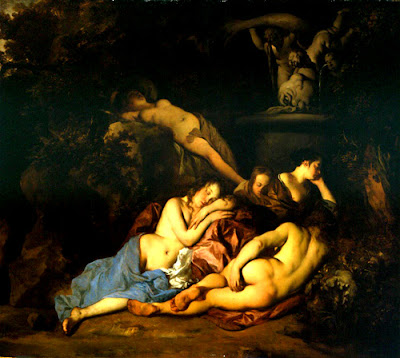
















.jpg)



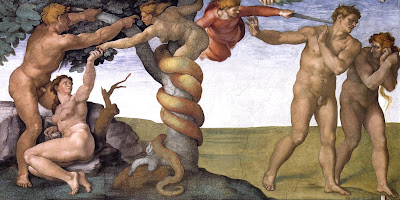

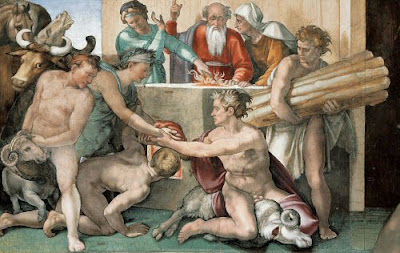
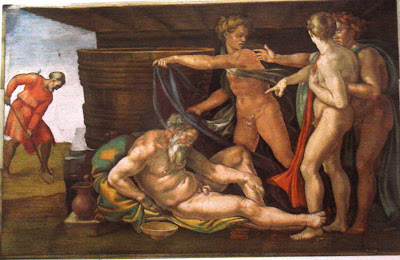
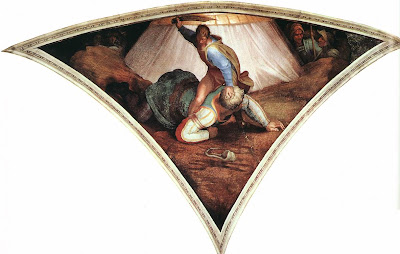











.jpg)




.jpg)


































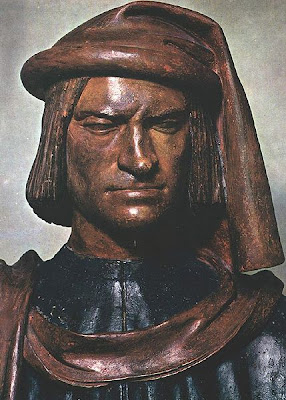
.jpg)

